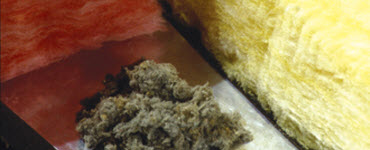Basements and crawlspaces
To achieve the recommended R-10 value, your builder can attach rigid foam board insulation to the basement walls, then cover it with gypsum drywall boards for fire protection. If the basement will be finished, your contractor might construct 2x4 stud walls and install batt or blanket insulation.
Insulated concrete forms
It may sound a little strange, but Styrofoam blocks can be a great way to increase energy efficiency. The hollow foam blocks, called insulated concrete forms , fit together like Legos and are reinforced with steel rebar.After concrete is poured into the hollow channels, the blocks become a well-insulated, strong, water- and insect-resistant foundation.
Insulating the foundation exterior
Builders in some areas of the country insulate the exterior of the foundation with rigid foam boards between the concrete block and the siding.One disadvantage of this method is that moisture, insects or ground movement can damage some exterior insulation. If your builder recommends this method, be sure to verify that the insulation to be used is guaranteed for exterior use.
Don't forget the crawlspace and sill box
Whether you choose to insulate the interior or exterior of your basement - or both - it's important to remember the crawlspace and sill box areas.
A crawlspace should be insulated to keep heat from escaping. If the area is unheated, it should also be ventilated to prevent condensation and moisture damage.
There are two methods for insulating crawlspaces:
- Drape fiberglass batts along the wall - this is the preferred approach.
- Install batt insulation on the ceiling of the crawlspace.
The sill box is the area between the foundation and the floor joists. This area should be insulated the same as the wall above.
More from this category
Weatherizing materials
A typical home will need about $50 in weatherizing materials - and the cost can be paid back in energy savings in just a few weeks.
Insulation options
The right insulation material for your home depends on where it will be used and what type you already have.
Vapor barriers & ventilation
An energy-tight home requires adequate ventilation and vapor control to maintain healthy air.
Solar attic fan
Finding and sealing air leaks
Weatherizing tips & tricks
Use this checklist to make sure you don't overlook hidden energy wasters in and around your home.
Spray foam insulation
Spray foam insulation does a great job of sealing up cracks and crevices, if it's installed properly. Learn more about open-cell spray foam options.








